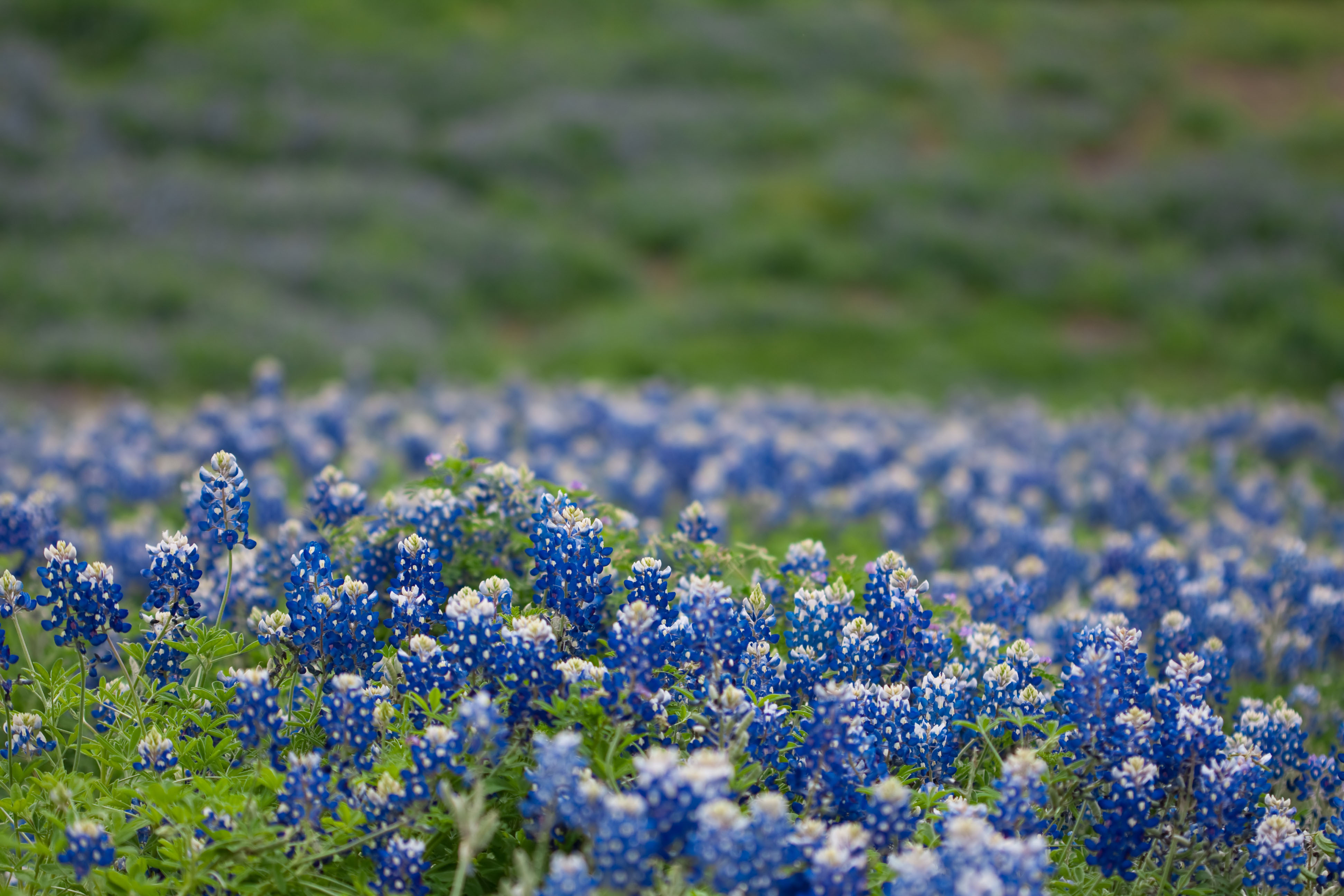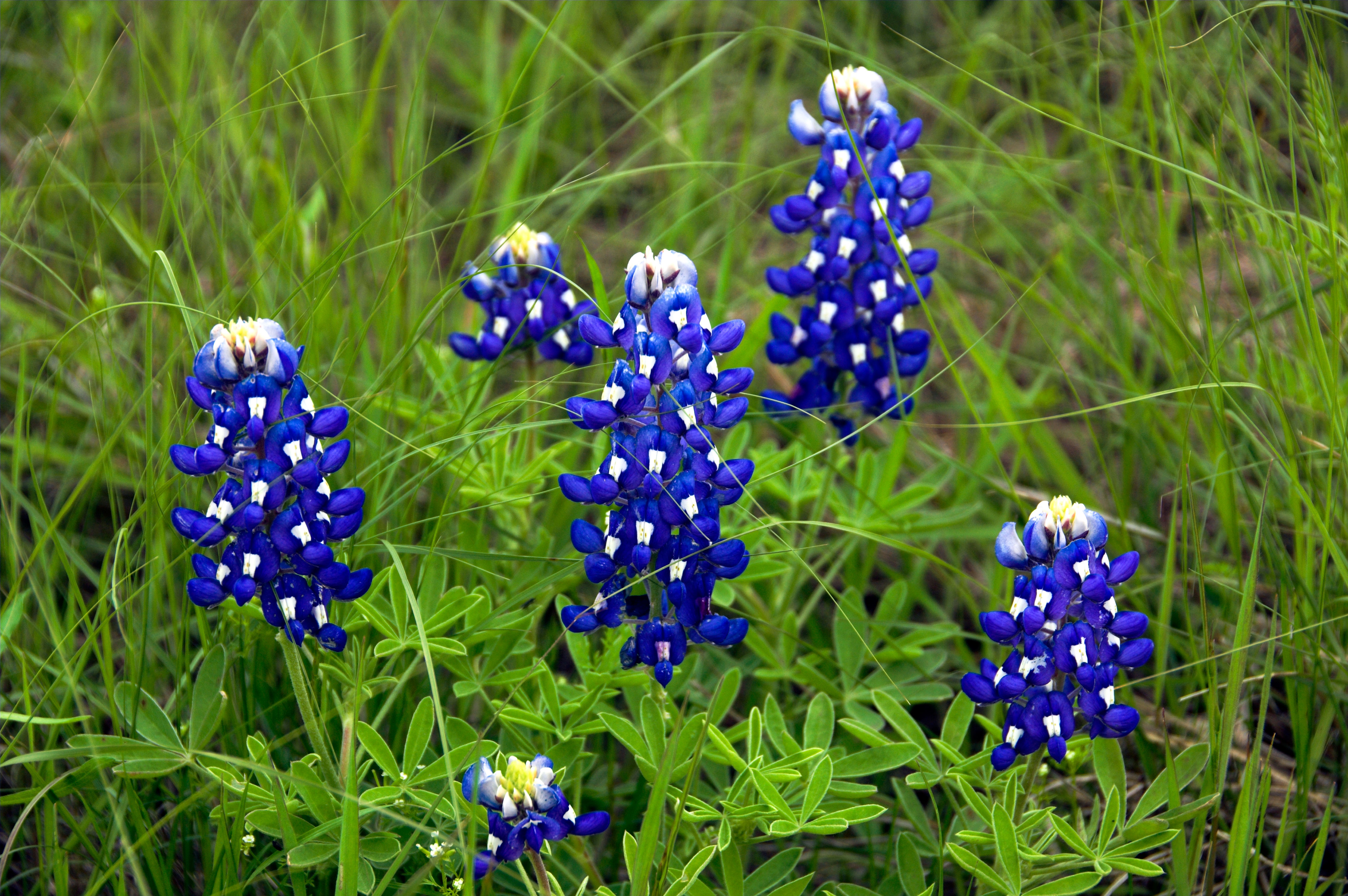How to grow blue bonnets – tips for raising the Texan State flower
Learn how to grow bluebonnets to bring your plot alive with color and pollinators


Add spectacular spring color to your yard by learning how to grow bluebonnets. Whether it’s for sentimental reasons, to help feed pollinators or just to gaze on a magical sea of brilliant blue, raising these magnificent blooms is hugely rewarding.
Happy growing en masse or filling a small planter, they are perfect flower bed ideas for bringing color and interest to an unused patch of land or a bare spot in a sunny border. Weave them in drifts amongst ornamental grasses or use them with other native varieties for an area of meadow style planting.
Closely related to the lupin, although belonging to the pea and bean family, they are a hardy annual that goes from seed to flower back to seed in a single, season. If conditions are right, after self-seeding they will happily reappear the next year. Although it may take few years to establish a strong stand of flowers, they will become a seasonal feature to cherish.
How to grow bluebonnets

Discover how introduce these dramatic blue flowering spires into your yard and learn how to keep them returning year after year. Start by planting bluebonnets in the right spot in your backyard.
Where do bluebonnets grow best?
The state flower of Texas, bluebonnets also grow through cultivation in southern Louisiana, Florida, Mississippi and Oklahoma. Happy in HDSA zones 4-8 they love poor but free draining soils, so if your patch is on chalk, sand, clay or loam its worth giving them a go.
The team at Wildseed Farms says, ‘Texas bluebonnet prefers a sloped area in light to gravelly, well drained, soil with a ph level between 6-7.’ They also add that, ‘bluebonnets require eight hours of direct sun,’ so do make sure you have a patch earmarked for them well away from any shading trees or buildings. South or west facing positions are best.
Bluebonnets are not a very sociable variety and don’t take kindly to being crowded out by other more vigorous plants. So, bear this in mind when planting within a well-established border.
How to prepare bluebonnet seeds for spring sowing
Once the blue blooms fade, furry pods form containing a row of several hard pea-like seeds. These have an exceptionally hard shell, as Mike Lizotte at American Meadows explains: 'There are some tricks to growing Texas bluebonnets (Lupinus texensis) successfully, including planting in fall or scarifying seeds so that the tough outer coating breaks down before it can germinate’.
Depending on the quantity of seed you wish to sow, this is best done by either carefully nicking the seed with a knife or rubbing them over with sandpaper and soaking the seeds overnight before planting.
If you are planting a very large quantity, try mixing the seeds with moist sand, popping them in a Ziploc bag and storing them in the fridge for 3-4 weeks. This will break them from their dormant state and encourage germination. You can then plant as normal.
How to sow bluebonnets
If you are planting seeds in a container or border, sow your softened seed at a depth of 1/8 inch (3mm) in groups of 2 or 3 and position around 10inches (25cm) apart. Tamp or firm the soil after sowing to ensure good soil seed contact. Once the true leaves appear thin to leave the strongest plant.
For larger areas such as drifts and meadows, clear the area and dig over. The recommendation for broadcasting or scattering seed is 1 pound per 700sq feet. You will then need to firm the soil to ensure good soil seed contact – by walking over it or treading on it with a wooden board.
Do bluebonnets need watering?
Originating in wild South, these plants are well adapted to dry conditions. Drought tolerant they cope well with long dry spells but absolutely detest sitting in water-logged soil, so make sure you incorporate sand or grit into your soil if in doubt.
When to sow bluebonnet seeds
Bluebonnet seeds are best planted directly outside in early October to November as the cooler wet weather will naturally help to breakdown the tough outer seed casing. This allows them to germinate and establish their roots before winter.
If you live in a colder zone, where winter temperatures will kill off young seedlings, its best to save planting bluebonnets until spring. If you do decide to do this, then you will need to stratify or soften the seed to help germination.
Do bluebonnets come back every year?
It can take a while to establish bluebonnets but once they are happy with the conditions they will self-seed and reappear the following year.
According to Texas Wildlife Association, ‘The flowers begin to open at the bottom of the plant and each flower has a white dot on one of the petals, which turns a reddish maroon color as the plant ages. This is why the petals at the bottom of the plant have red dots and the ones at the top have white dots.’
What are the main problems when growing bluebonnets?
Too much water is definitely a problem for drought tolerant bluebonnets. Make sure soil is free draining before planting.
Birds can pick off broadcast seeds that are left above the soil.
Pill bugs are partial to bluebonnet seeds so consider growing smaller quantities in trays first and then transplanting as seedlings.
Sign up to the Homes & Gardens newsletter
Design expertise in your inbox – from inspiring decorating ideas and beautiful celebrity homes to practical gardening advice and shopping round-ups.

Journalist Jill Morgan has spent over 20 years writing and editing gardening, interior and property features. Titles she has worked on include The English Home, House Beautiful, Ideal Home, Houzz and Modern Gardens and she writes regularly for H&G as a Contributing Editor. Whilst she is a dab hand at renovation projects and DIY, she is happiest when out digging in the garden or planning a new border.
-
 Step up your pool cleaning routine with Beatbot AquaSense 2 Ultra
Step up your pool cleaning routine with Beatbot AquaSense 2 UltraCelebrate National Pool Opening Day by saving up to $618 on a luxurious pool cleaning solution from Beatbot.
By Sponsored
-
 Isabella Rossellini's kitchen defines 'pantry perfection' – her sleek storage method is one of the most beautiful ways to bring order to your shelves
Isabella Rossellini's kitchen defines 'pantry perfection' – her sleek storage method is one of the most beautiful ways to bring order to your shelvesA custom Chilean applewood pantry lines the walls of the Conclave actress's kitchen – you can tap into her stunning technique from $42
By Megan Slack